Garden History
Caerhays is a woodland garden covering the whole of Castle Wood and now extending on into Kennel Close Wood, Forty Acres Wood and Old Park. With recent clearings and new plantings there are well over 140 acres of garden tended by a team of four or five gardeners led, since 1996, by Jaimie Parsons.
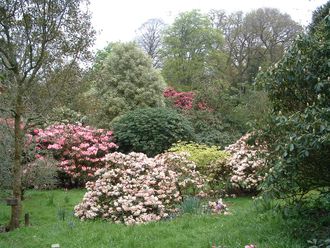
A Garden View
The gardens are open to the public for over 100 days from mid February to early June and attracts around 15,000 visitors in a year. To some this may seem a very early spring start and rather a short period of time to be open. Caerhays is however very much a traditional Cornish spring flowering garden and, by June, the trash and vegetation which grows so quickly in our wet climate (55-60 inches of rain per year) has less obvious appeal to visitors.
Caerhays is not a manicured or planned garden in the conventional sense. It is however designated as being of Outstanding importance by Kew Gardens and Registered as a Grade II* Park and Garden by English Heritage under the old style designations which they are soon to review.
Until the turn of the 20th Century Caerhays had no real garden. The earlier 19th century plant introductions of Joseph Rock, Hooker, or Abbe Delavay from China and the Lobb brothers in South America are largely absent. Caerhays only came into its own as a premier Cornish or British garden after 1900 with the combination of an ongoing family interest in plants and their opportunity and desire to link in with the exciting plant exploration work taking place in China. Although gardeners did disseminate new plants widely amongst neighbouring or family estates such as Heligan, Trewithen, Tregothnan and Stanage much of the material at Caerhays (and Werrington Park) is unique. The first plants of many new species formerly unknown in Western Europe can still be seen today more than a hundred years on.
The garden at Caerhays has a unique microclimate. The prevailing and frequently westerly gales rage over the top of the sheltered garden. Sea mists bathe the woodland in moisture and humidity which is very suited to the Chinese mountain habitats from which so many magnolias and rhododendrons originate. In addition the rich acidic soil is ideal for growing ericaceous plants. Just as many would regard the castle as an ugly building without its setting in the Luney valley, so the gardens themselves would also be impossible to replicate if set in a less favourable environment.
To appreciate what the gardens are really about imagine you are halfway up a mountain in the Chinese province of Yunnan 100 years or so ago and then enjoy the reality of Caerhays.
The Chinese Plant Hunters
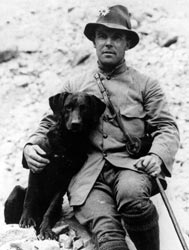
George Forrest
The gardens at Caerhays stem from the work of two great Chinese plant collectors, E.H.Wilson (1876 -1930) and George Forrest (1873 – 1932). If they were the ones who risked their lives collecting plant seeds from new species unknown in Western Europe in parts of China which were still, even at the start of the 20th Century, effectively in the Dark Ages, it was the sponsors and funders of their expeditions who then grew on the spoils in their new gardens.
J.C. Williams, who owned Caerhays, Burncoose and Werrington Estates, bought his first 25 Chinese rhododendrons from the Veitch Nursery in Exeter in 1903. In 1905 the Garden Book at Caerhays records the first of these new Chinese specimens, which had been collected by Wilson, being planted out on the hillside above the castle. By 1906 over 50 new species of Rhododendrons were being planted out and the creation of the garden was well under way.
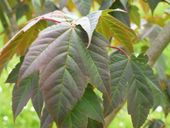
Acer taronense
Click here for further reading on JC Williams and Caerhays since 1897 – opens new window.
Click here for an article on Daffodil breeding at Caerhays.
Part of what we look at today as the core of the woodland garden would have been coastal scrub. The remainder, at the top of the garden, was still fields. JCW and his garden staff, which numbered over 50 by 1910, made inroads into the scrub to create small sheltered planting coupes. They also wisely planted dense shelterbelts to protect the new introductions.
The excitement of the first new arrivals was tempered by the risks being taken by the plant collectors. In Szechwan and Yunnan, where disputes were still being settled with bows and arrows, and where Forrest was to narrowly escape the fate of many indigenous tribesmen who had their hearts cut out and eaten, there was a considerable risk that collectors would be unable to return. For this reason their plant introductions had to be protected at all costs with little thought of ultimate size or fancy colour schemes. Survival was all important.
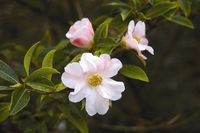
Camellia saluenensis
Nestling plants together for protection to help create their own microclimates is how we would perhaps describe it today. Probably more likely, was that JCW and his head gardeners were trying to replicate the densely wooded mountain slopes of Yunnan by planting thickly and in clumps.
In 1911 George Forrest switched allegiances to work for JCW. His third Chinese expedition from 1912 – 1915 was funded entirely by JCW on his own to the tune of £3,108.13s.6d. This would be over £400,000 in today’s money. JCW was also to make major financial contributions to Forrest’s next four expeditions ending with his death in Tengyueh, China in 1932.
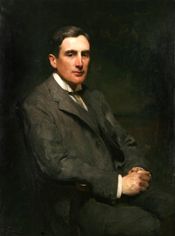
J C Williams
Literally thousands of packets of seeds began arrive at Caerhays and the onset of World War in Europe appears to have made no difference to the collectors’ continuing work.
JCW, Wilson and Forrest were great letter writers. Forrest’s letters to JCW meticulously record his discoveries while JCW’s replies often go into great detail about the first flowerings of these new plants.
Forrest’s collecting was not limited to rhododendrons alone but encompassed a wide range of other genuses including, acer, magnolia, michelia, manglietia to mention but a few of his woody (as opposed to herbaceous) plant introductions.
A selection of original, and possibly the most important, of Wilson and Forrest’s introductions at Caerhays are listed below. It is interesting to note the longevity of some of these plants which continue to be record sized UK trees in their own right 90 or more years after planting. It would seem that Chinese magnolias will live to be a hundred but many rhododendron species peak at the age of 60 – 70.
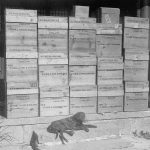
George Forrest packing cases for JC Williams
One can only speculate on how many seeds failed to germinate and which were consequently never named. Some may have been rediscovered in more recent times by botanists but many more may well await rediscovery. Although JCW paid Forrest a bonus for each new species of rhododendron he brought back, and although this may have helped cause the same species to be given several different names, the sheer volume of discoveries made by Wilson and Forrest remains staggering to comprehend in this day and age.
The arrival of this plant material opened up opportunities for JC and his successors, Charles Williams MP, Julian Williams and Charles Williams to engage in an extensive programme of hybridisation work which is still going on today. The origin of the truly hardy, free flowering and easy to grow x williamsii strain of camellias dates from J C’s original cross between Camellia saluenensis and Camellia japonica in 1923. Williamsii hybrid camellias now number many thousands of varieties and are still hybridised and grown throughout the world.
We have lots of photos in of JC and Caerhays’ achievements in hybridising magnolias, rhododendrons and camellias. Visitors to the gardens will see some of our latest hybridisation work as well as the ever expanding NCCPG National Magnolia Collection which now numbers around 90 species and over 500 hybrids
Please read more in the Caerhays Garden Guide or Caerhays Garden Book.
In 1955 Charles Williams died. Again a period of entrenchment occurred as even bigger tax bills were faced but the future of the garden was never in any doubt. A magnificent staff have improved it year on year and there have been frequent changes and set backs. For example we have not had a cold winter since the early 1960’s. We all recall that too well. Lesson 1, always know who your plumber is and where he lives! In 1962/63 the damage to plants was dreadful.
Warm winters meant garden pests and bugs thrived. Drought in the 1970’s weakened greatly the more mature Beech trees and older large Rhododendrons. The Great Gale of January 1990 took out 20% of the garden in one night. The carnage was appalling. Caerhays has indeed paid the price for growing champion sized Nothofagus trees. When these fell they destroyed plants growing in large areas. It was very fortunate that at this depressing juncture the writer’s son, Charles, appeared on the scene. He was already running the new Burncoose Nursery outside Gwennap on the main A393 Falmouth – Redruth Road. He took charge and the mess was soon cleared up and the new areas replanted but it was a fearful incident.
There have always been threats to a garden. Now we have ‘Sudden Oak Death’ (SOD) and the excitement that this has produced. One of the qualities of this new age in which we live is for ministries to take hasty and drastic action very quickly as soon as the problem appears. Rhododendron ponticum has been identified as a potential source of Sudden Oak Death in trees so many clumps of ponticum have been cut doomed to extinction and cut down. The lessons of Foot and Mouth have sadly not been learnt.
What can destroy a garden like Caerhays very quickly is to destroy the windbreak that surrounds it – it is put there to keep the wind out.
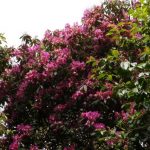
Rhododendron ponticum
It is for this reason Rhododendron ponticum is there. So mass ponticum destruction will let the wind on to Caerhays as it’s replacement as a windbreak will take many years to become effective.
Very little thought was given to the effects of knee jerk reaction.
An old friend used to say “deary, things are never as bad as they seem”. He has always proved right in the past and one hopes it will continue to in this case.
Visitors will wish to know what has happened since 1955 and what is planned for the future.
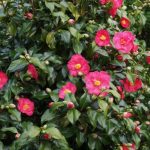
Camellia japonica
The first few years after 1955 were again periods of retrenchment but soon replanting resumed. Many tree Magnolias were put out at that time. In the early 1970’s the garden had a happy visit from the great American Camellia enthusiasts Milo Rowell and Maynard Munger. They encouraged us to grow new strains of the new japonica Camellias which had been bred in the USA. These are now showing their paces. Since 1990 many new plants are now showing what they can do.
In 1996 a milestone was passed with the retirement of Philip Tregunna who had worked all his life in this garden and been Head Gardener for forty years. Luckily he has not disappeared and still helps the estate and the Williams family in many ways. His advice and experience he shares with great generosity.

Jaimie Parsons
His successor, Jaimie Parsons, took over in 1996. He had been aware of the estate most of his life. He assumed the helm at a time of enormous challenge. We have replanted large sections of 2 nearby woods which it is hoped visitors will enjoy in years to come. The major thrust of recent years has been to choose and to grow the best of the growing host of the new Magnolias which now form the NCCPG national magnolia collection at Caerhays.
Charles has also noticed that one of the chief beneficiaries of the warmer times we now enjoy has been the podocarpus family. Podocarpus salingus has always been spectacular at Caerhays but the podocarpus collection has now become a considerable feature at Caerhays in its own right and now new Podocarpi are growing with vigour especially along the Hovel Cart Road.
Caerhays has always been a plants man’s garden i.e. one where good specimens of interesting (and at times spectacular) plants grow. It is the opposite of the formal garden.
Under Jaimie Parsons leadership, it is hoped that this garden here will be enjoyed by an ever increasing number of people.
The Garden Diary continues every day…..
Original Forrest Introductions
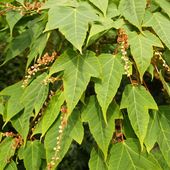
Acer forrestii
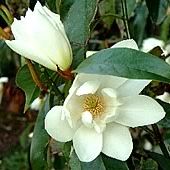
Michelia doltsopa
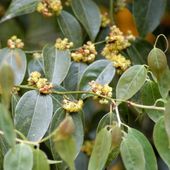
Lindera communis
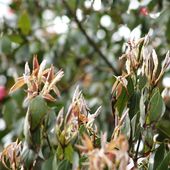
Cinnamomum glanduliferum
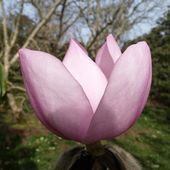
Magnolia campbellii
subsp.mollicomata
| 25184 | Acer taronense |
| Acer forrestii | |
| 25156 | Camellia saluenensis |
| Castanopsis concolor | |
| 27393 | Camellia reticulata |
| 24190 | Cinnamomum glanduliferum |
| 25197 | Camellia sinensis |
| 24030 | Lindera communis |
| 26509 | Magnolia nitida |
| 24214 | Magnolia campbellii subsp.mollicomata |
| 26506 | Manglietia insignis |
| 26580 | Michelia doltsopa |
| Michelia floribunda | |
| 24183 | Quercus lamellosa |
| Rhododendron griersonianum | |
| Rhododendron russatum | |
| Rhododendron martinianum | |
| Symplocos glomerata |
Some Wilson introductions at Caerhays which survive today
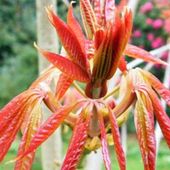
Aesculus wilsonii
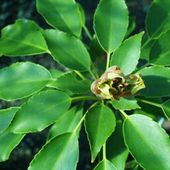
Trochodendron arallioides
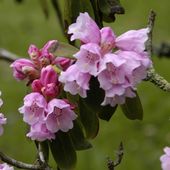
Rhodo. fargesii
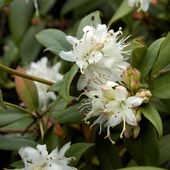
Rhodo. hanceanum
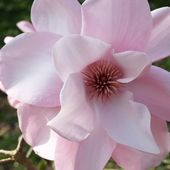
Magnolia sargentiana
var. robusta
| 4506 | Acer giraldii |
| 498 | Aesculus wilsonii |
| 304 | Catalpa duclouxii |
| 4116 | Magnolia dawsoniana |
| 914 | Magnolia sargentiana |
| 923 | Magnolia sargentiana var. robusta |
| 204 | Prunus pilosiuscula |
| 4239 | Rhodo. davidsonianum – Caerhays Pink form |
| 4257 | Rhodo. decorum |
| 1250 | Rhodo. fargesii |
| 4255 | Rhodo. hanceanum |
| 10955 | Rhodo. morii |
| 887 | Rhodo. stamineum |
| 1810 | Rhodo. orbiculare |
| 1350 | Rhodo. williamsianum (original plants have died -but one remains at Burncoose) |
| 886 | Rhodo. wilsonii |
| 479 | Sorbus hupehensis |
| 291 | Styrax hemsleyanus |
| 290 | Styrax wilsonii (original died but seedlings survive) |
| 313 | Trochodendron arallioides (Old Park) |
